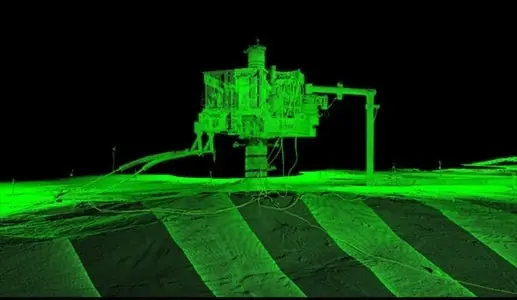Secure Access Service Edge (SASE) is a framework that combines networking and security functions into a unified, cloud-based service. As more organizations shift to remote work and rely on cloud platforms, traditional network architectures may no longer meet performance and security expectations. SASE offers a more adaptable approach, streamlining how users connect to applications and resources across distributed environments.
A general benefit of this model is its ability to deliver consistent security regardless of user location. SASE cyber security integrates various protections—such as secure web gateways, firewalls, and zero-trust access—within a single platform. This helps organizations manage risks more efficiently without relying on separate, location-based tools. By offering flexible, centralized management, SASE can help simplify network operations and support a wide range of business needs in a practical, scalable way.

Core Components of SASE
A strong SASE solution includes several closely connected parts, each created to handle a specific aspect of secure connection and policy enforcement. These include:
- Software-Defined Wide Area Network (SD-WAN):This technology optimizes and secures application traffic by dynamically routing data across multiple links for resilience and speed. SD-WAN reduces reliance on expensive MPLS circuits and enables direct-to-cloud connections for branch offices and remote workers.
- Secure Web Gateway (SWG):SWGs function as advanced gatekeepers, preventing access to malicious or non-compliant sites and filtering web traffic in real time. They scan all incoming and outgoing traffic for known threats and enforce browsing policies to protect users from phishing, malware, and data leakage.
- Cloud Access Security Broker (CASB):CASBs sit between users and cloud applications, providing visibility and policy control over data flows, apps, and access permissions. They enforce security policies even as users interact with sanctioned and unsanctioned SaaS offerings outside the traditional perimeter, supporting compliance and reducing shadow IT risks.
- Zero Trust Network Access (ZTNA):ZTNA ensures ‘never trust, always verify’ access by requiring every user and device to prove their identity and security posture before gaining access to any application, regardless of network location. This allows granular, least-privileged access and eliminates the broad access common to legacy VPNs.
- Firewall as a Service (FWaaS):FWaaS delivers stateful inspection, intrusion prevention, and security policy management as a cloud-based service. Organizations gain consistent rule enforcement, simplified updates, and unified policy administration—enabling secure connectivity from anywhere without needing on-site hardware.
Benefits of Implementing SASE
Today’s IT landscape comprises hybrid and remote work, multiple cloud providers, and strict regulatory demands. Implementing SASE confers several compelling benefits to organizations navigating this fast-paced and complex terrain:
- Enhanced Security:Integrating zero-trust principles, real-time authentication, and comprehensive policy management greatly diminishes the risk posed by external attackers and insider threats. It helps segment networks, enforce least-privilege access, and block lateral movement by cyber criminals.
- Improved Performance:With multiple PoPs distributed globally, SASE directs user traffic along the fastest and closest route to resources—minimizing latency and ensuring smooth, responsive connections for critical applications, regardless of user location.
- Simplified Management:IT teams are freed from the headaches of managing scattered legacy hardware and disparate policy engines. Instead, centralized cloud dashboards provide single-pane-of-glass visibility and control, reducing administrative overhead and making compliance reporting much more straightforward.
- Scalability:Cloud-based SASE solutions scale instantly to accommodate organizational growth, mergers and acquisitions, seasonal workforce expansions, or new branch deployments—all without the delays and costs of provisioning new hardware or manual configuration.
Challenges in SASE Adoption
Despite its clear advantages, organizations may face several challenges as they transition to SASE. Addressing these head-on is key to realizing SASE’s full value:
- Integration with Existing Infrastructure:Many organizations have invested heavily in legacy security tools and network infrastructure. Migrating to SASE often requires phased rollouts, compatibility assessments, API-driven integrations, and well-orchestrated change management programs.
- Policy Management:Converging and enforcing policies across a distributed ecosystem can be complex. Organizations must coordinate between departments, automate policy updates, and maintain strong IT governance to prevent rule conflicts or compliance gaps.
- Skill Gaps:Transitioning to a cloud-native, zero-trust security paradigm requires upskilling in-house IT and security teams. Many enterprises choose to complement internal efforts with training, certifications, or partnerships with managed service providers who bring expertise and best practices.
Future Trends in SASE
SASE continues to evolve rapidly, with vendors prioritizing innovation in automation and intelligence. Artificial intelligence and machine learning will soon enable even more adaptive policy enforcement, allowing for real-time, context-driven adjustments in security postures based on user behavior, device health, and emerging threat trends. The application of Zero Trust principles will further expand, permeating not just network layers but also application, endpoint, and data security.
- Increased Integration of AI:Machine learning will proactively analyze traffic patterns and alert to anomalous activity, automatically updating access controls and shielding organizations from zero-day threats.
- Expansion of Zero Trust Principles:Zero trust will become the default, ensuring that every user, device, or application is continuously validated and monitored, regardless of where or how they connect to the network.
- Consolidation of Vendors:As end-to-end security becomes more critical, expect the SASE vendor landscape to consolidate. Organizations will increasingly opt for single-vendor solutions to minimize integration friction and centralize management.
Conclusion
SASE stands as one of the most profound shifts in network security since the firewall. Its unified, cloud-centric approach harmonizes security and networking, addressing the challenges of a modern, distributed, and always-connected enterprise. For organizations accelerating digital transformation or safeguarding themselves against advanced threats, SASE adoption is a foundational strategy—delivering the agility, resilience, and security essential for long-term success in our digital-first era.














